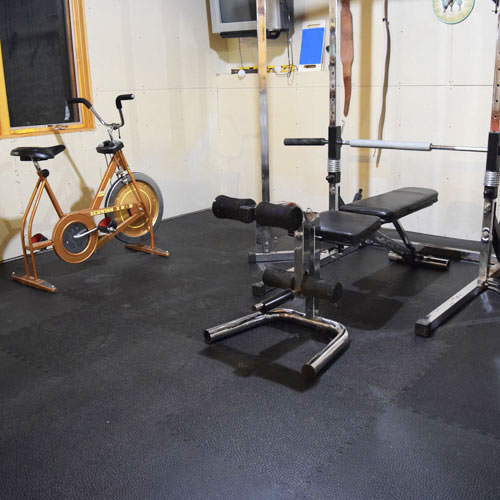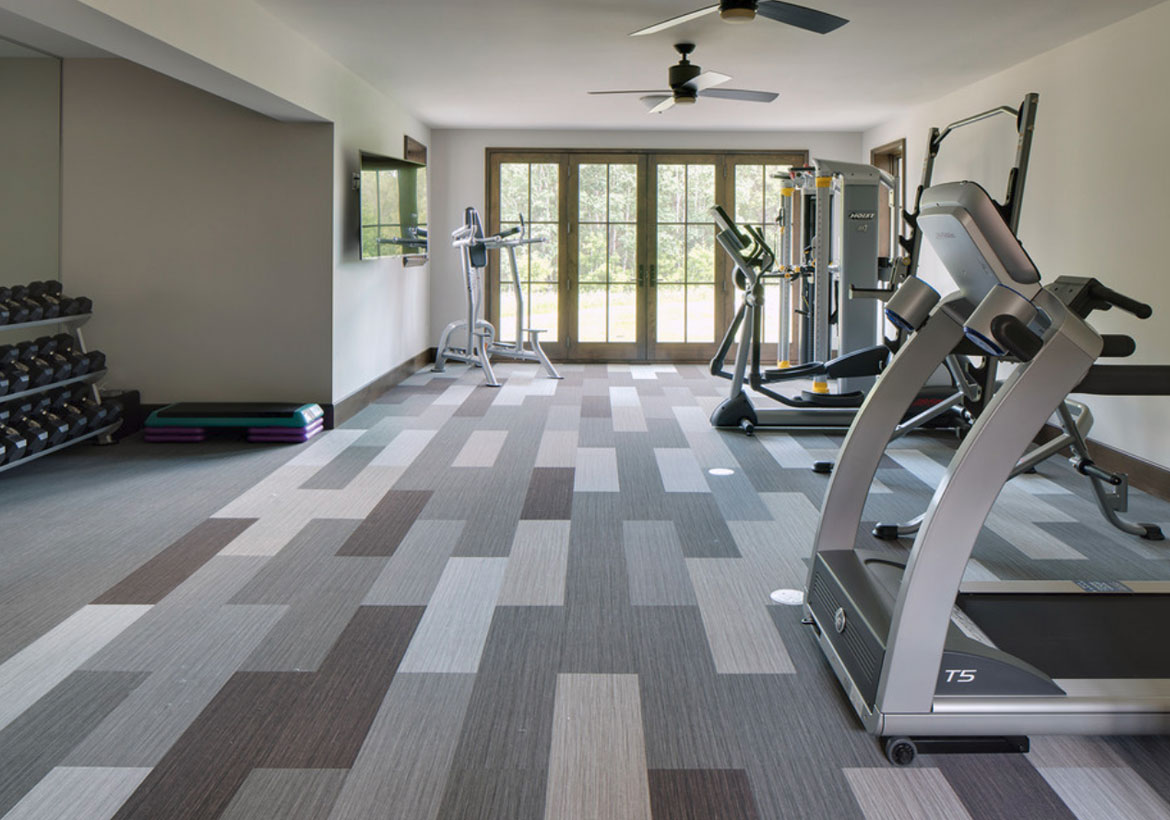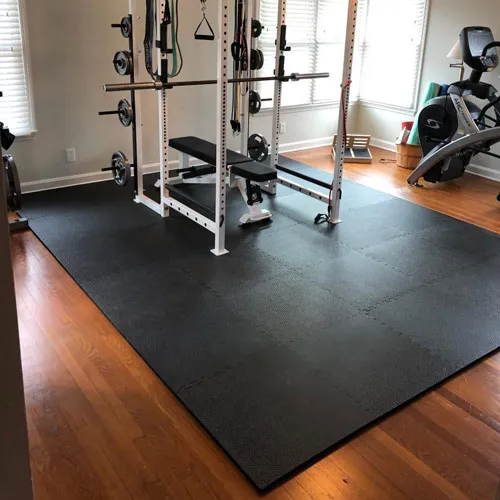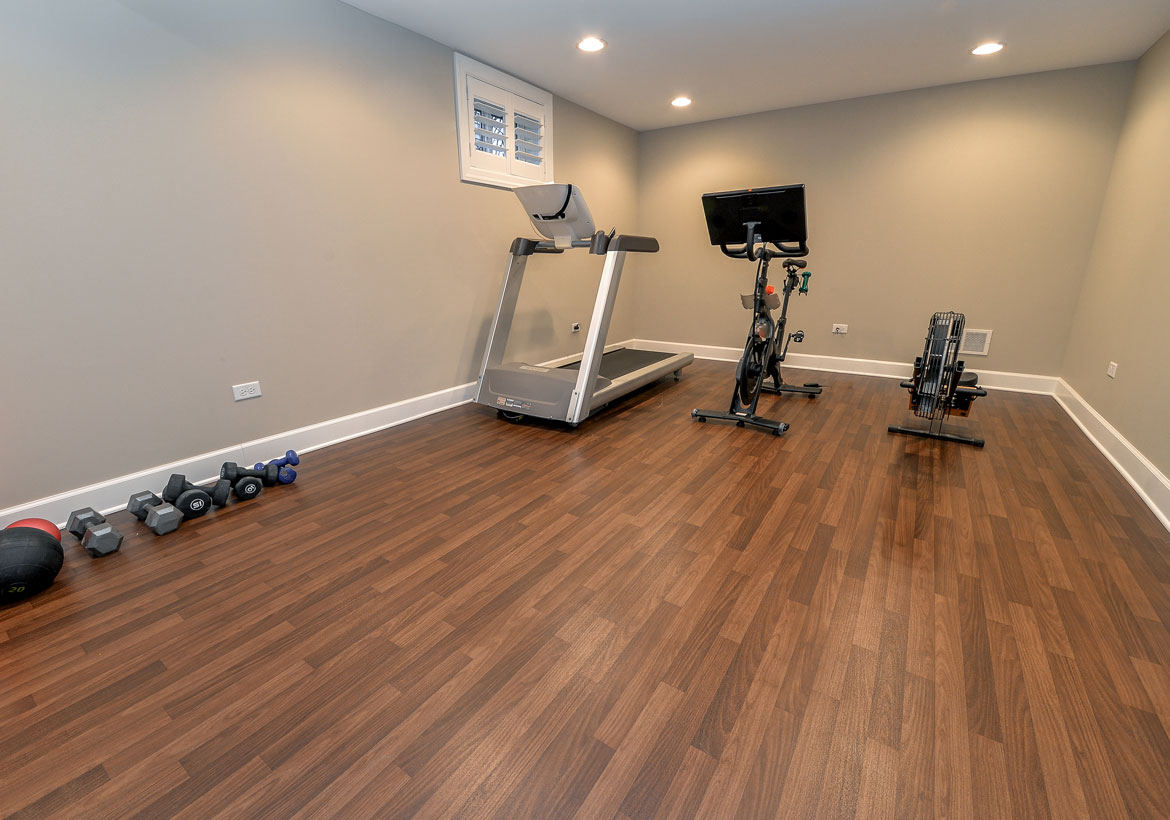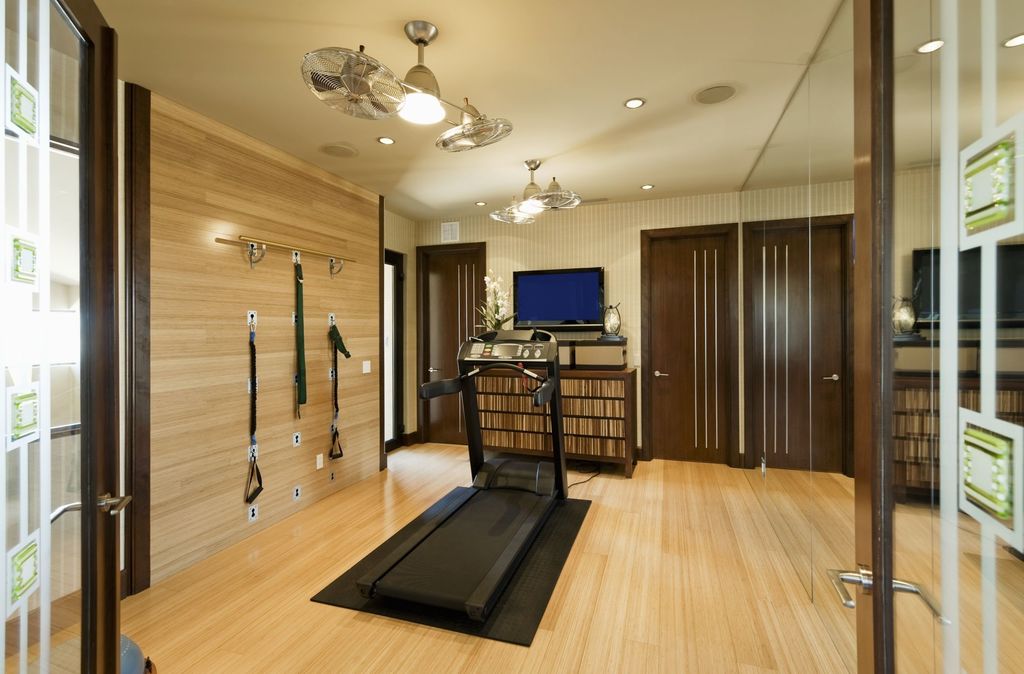Choosing the Right Flooring for a Basement Gym
A basement gym provides a convenient and private workout space, but selecting the right flooring is essential for safety, durability, and comfort. The type of flooring you choose should offer proper support for high-impact activities, resist moisture, and provide insulation against cold basement floors. Here, we’ll explore some of the best flooring options for basement gyms and the advantages they bring.
Rubber Flooring: A Durable and Shock-Absorbing Choice
- Impact Resistance: Rubber flooring is one of the most popular choices for home gyms due to its ability to absorb shock. Whether you’re lifting weights, performing high-intensity workouts, or practicing yoga, rubber provides a cushioned surface that reduces strain on joints.
- Slip Resistance: Basements tend to have higher humidity levels, which can make floors slippery. Rubber flooring offers excellent grip, reducing the risk of slipping during workouts. This feature makes it a safer option for intense exercise routines.
- Easy Maintenance: Cleaning rubber flooring is simple. A damp mop and mild detergent are usually enough to remove sweat, dirt, and dust. Some rubber flooring options even come with antimicrobial properties to prevent mold growth in basement environments.
- Installation Flexibility: Rubber flooring is available in rolls, tiles, or mats, making it adaptable to different space requirements. Tiles with interlocking edges are easy to install and can be adjusted or replaced if necessary, making them ideal for DIY setups.
- Noise Reduction: This flooring material helps minimize noise, especially when using heavy weights or equipment. The cushioned surface absorbs sound, reducing disturbances for those in other parts of the house.
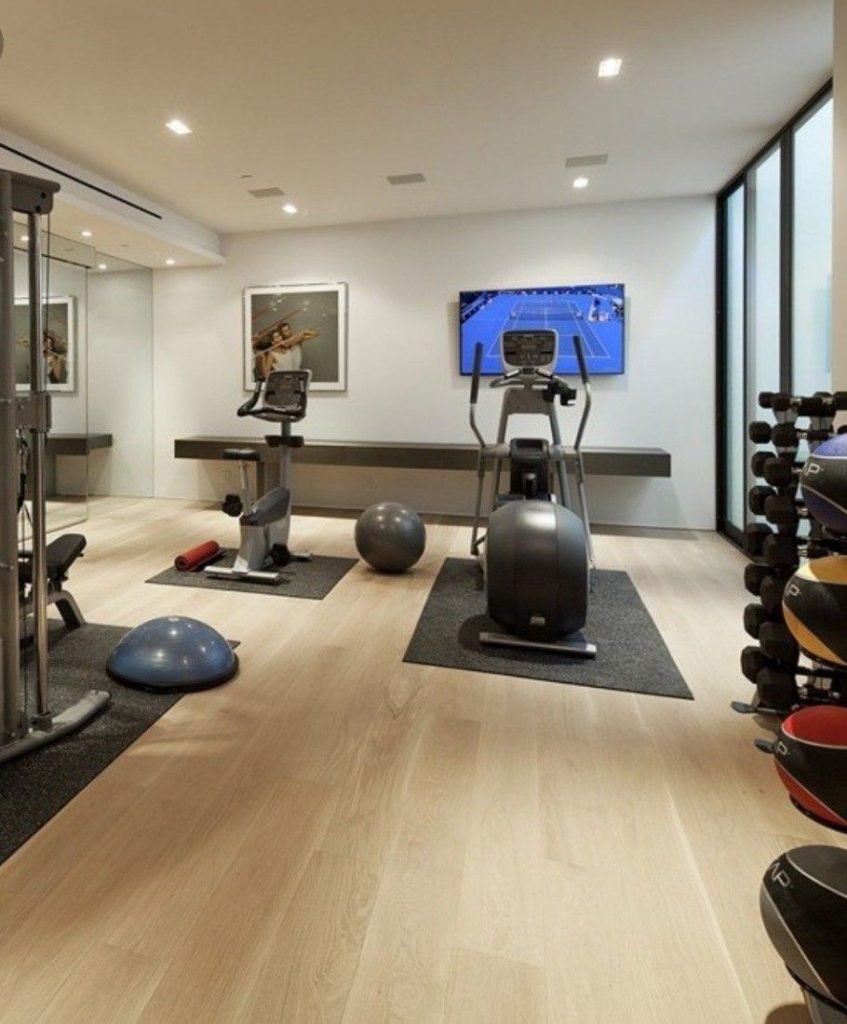
Foam Tiles: Comfort for Low-Impact Workouts
Soft and Cushioning Surface: Foam tiles provide a softer surface, making them an excellent choice for activities such as yoga, stretching, and bodyweight exercises. The cushioning helps protect joints, making workouts more comfortable.
Lightweight and Easy to Install: Foam flooring is lightweight and typically features interlocking pieces for easy setup. This makes it a convenient option if you need a temporary or removable flooring solution.
Affordable Option: Compared to other flooring materials, foam tiles are budget-friendly. They offer sufficient support for general fitness routines without requiring a large investment.
Temperature Insulation: Basements tend to be cooler than other parts of the house. Foam tiles provide insulation against cold floors, making workouts more pleasant in winter months.
Limited Durability: While foam is comfortable, it may not withstand heavy weights or intense impact activities. Over time, foam flooring can compress and show wear, so it is best suited for lighter workouts rather than heavy lifting.
Vinyl Flooring: A Moisture-Resistant Alternative
Waterproof Properties: Basements are prone to humidity and potential leaks, making vinyl flooring a great moisture-resistant choice. Unlike wood, vinyl won’t warp or absorb water, making it a reliable option for gym environments.
Durability Against Wear and Tear: Vinyl flooring is designed to withstand daily use, making it suitable for high-traffic areas. It resists scratches and dents, ensuring longevity even with frequent workouts.
Smooth and Versatile Surface: Vinyl provides a flat surface that works well for a variety of exercises, including cardio workouts, aerobics, and weight training. Its slightly cushioned feel makes it comfortable without sacrificing stability.
Easy Cleanup: Maintaining vinyl flooring is effortless. It only requires regular sweeping and occasional mopping to keep it clean, which makes it ideal for gym environments.
Stylish Options: Vinyl comes in a variety of designs, including wood and stone looks. If you want a gym with a polished appearance while maintaining functionality, vinyl flooring provides aesthetic appeal without compromising practicality.
Carpet Tiles: A Comfortable Yet Unconventional Choice
Soft and Comfortable Feel: For those who prefer a warmer surface underfoot, carpet tiles can be a good option. They provide cushioning, which helps absorb impact from exercises and adds an element of comfort to the gym.
Customizable Design: Carpet tiles come in a range of colors and patterns, allowing homeowners to customize their gym space. The modular nature of carpet tiles makes it easy to replace worn or damaged sections over time.
Absorbs Noise: If noise reduction is a priority, carpeted flooring helps minimize sound from gym equipment and foot traffic. This feature is beneficial for basement gyms located under frequently used living spaces.
Not Ideal for High-Impact Workouts: While carpet tiles work well for general fitness and stretching, they aren’t the best choice for weightlifting or intense workouts. They may not provide the necessary support and can wear down quickly with repeated heavy use.
Requires Regular Cleaning: Carpet absorbs sweat and dust, requiring more frequent cleaning compared to other flooring options. Vacuuming and spot cleaning help maintain hygiene and extend the lifespan of carpet tiles.
Engineered Wood: A Stylish Yet Functional Choice
Warm and Natural Look: For those who want their basement gym to have a stylish appearance, engineered wood flooring offers a sleek and sophisticated feel. It provides the warmth of natural wood while being more resistant to moisture compared to traditional hardwood.
Durability for General Workouts: While engineered wood isn’t ideal for heavy weights or impact-based exercises, it works well for general fitness activities such as yoga, Pilates, and aerobic workouts.
Resistant to Moisture: Unlike solid hardwood, engineered wood is designed to resist moisture better, making it a suitable option for basement environments. However, prolonged exposure to humidity or water leaks should still be avoided.
Easy to Clean: Maintaining engineered wood flooring is simple. Regular sweeping and occasional damp cleaning help preserve its finish and prevent buildup of dirt and sweat.
Requires Protective Mats for High-Impact Activities: To prevent scratches or damage from gym equipment, placing protective mats under heavy machines is recommended. This ensures the wood maintains its appearance while providing adequate support for workouts.
Choosing the right flooring for a basement gym depends on the type of workouts you plan to do, your budget, and the environmental conditions in your basement. Whether you prioritize durability, comfort, moisture resistance, or style, there’s a flooring option that fits your needs. By selecting a material that suits your exercise routine, you can create a gym space that is both functional and inviting.
Best Home Gym & Workout Room Flooring Options
The 5 Best Home Gym Flooring Ideas Family Handyman
Gym Floor Workout Fitness Tile Pebble 3/4 Inch x 2×2 Ft.
Best Home Gym u0026 Workout Room Flooring Options – Sebring Design Build
Best Home Gym Floor Ideas – Fitness Room Flooring Designs
Best Home Gym Floor Ideas – Fitness Room Flooring Designs
Home Gym Flooring Options
Hot To Squat: Build The Perfect Home Gym, Part One – Flooring
Related Posts:
